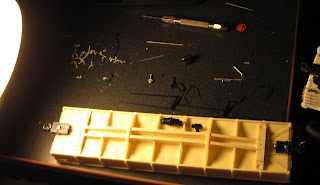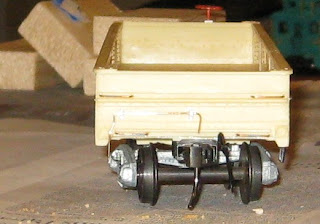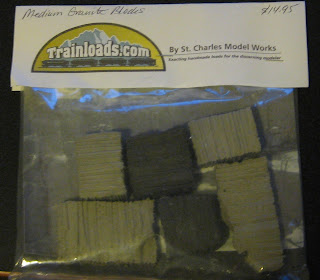So I picked up a Brass Rich Yoder Models 44 Tonner. Its a really beautiful piece. Ran smooth before I installed TMCC as well. Rich is known especially by 2-railers for his exquisite pieces that run extremely smooth and are extremely accurate.
I used TMCC products from Electric Railroad. The Mini Commander 2 to drive the motors and directional headlights. I also was able to fit in a Sound Commander 2 board with the RDC multichime horn sounds as the diesel generator sounds are the same and the horn I am using will be multichime.
Below outlines what I've done to build his piece into my accurate model.
I had to take everything apart. Unscrew the screws for the shell and the fuel tank. Go ahead and snip out the wires from the electronics as they are not necessary. I replaced the LEDs with warm white LEDs in the 3mm size. They fit in the hole just fine. I soldered a 1kohm resistor in series with the positive lead to get it ready for use with the ERR Mini Commander 2 board.

Using prototype photos of the SOU1951 44T, I determined that I needed to remove the sunshades of the cab windows and the extra detail on the ends by the headlights. Other details I used from photos was the type of horn used, the air line to the horn, the cab shades, and the infamous headlight shades that were a pain to reproduce.

I used 600grit wet sandpaper to remove the lettering. To remove the Pennsy tiger striping on the pilots, I used ELO, wet sandpaper, and a lot of elbow grease and time as I didn't want to remove the underlying paint, just the stripes that stuck up from the paint.

I used automobile Bondo to fill all of the holes from where I removed the cabshades, the detail by the headlight, and where the old horn was. I let the bondo dry and sanded it dry and then wet to get it as smooth as possible and unnoticeable. This took many tries and a few hours to get to look perfect.

For TMCC reception, I used the horn and the airline as the external antenna. This is key as you need the antenna to make it outside of the brass body so one can get TMCC reception. The other option is to wrap an antenna around the underframe underneath the underframe.

This is a switcher and I wanted ELECTRO couplers. Scale ones at that. The Atlas ones fit the bill, but stuck out too much. I used styrene to shim the coupler up to the right height and I also moved it back so that the coupler would not stick out that far. The trucks had to be modified to allow for this. If using 806 kadees, nothing this extreme would be necessary.

One can see the truck was modified and the pickup roller had to be moved back.

I drilled and tapped new holes using a 8-80 bits from Kadee. Alot of work, but necessary for the electro couplers.

Looks good to me. You can also see the screws sticking up from the styrene shim. The styrene was also held together using 5 minute expoxy from Loctite.


I used walther's magic masker on the windows so I could easily airbrush the black all over. This is after I made a hole for the horn placement, etc. Seen being decaled for Southern using photos. Both sides were different as far as placement of the ACI plate and the words Southern were concerned. Using prototype photos is a MUST to get things right.

Southern Railway Tiger Stripes. Much thinner than anything the Pennsy had.

AtlasO SW7/9 switcher speaker is just small enough to fit. The sound is somewhat muffled and may need the placement to be moved to the front of the engine where the grill is.

The fuel tank was slightly modified to allow the mini commander 2 board to fit into it. Lots of wires.

Everything assembled. I believed I used a combination of 4-40 washers/nuts/screws to hold the trucks in place. The wiring is pretty easy to do if you follow the ERR instructions.

Completed model shown with the correct horn, electro couplers, and the headlight shades. >20 hours of work depending on how much functionality you want and how prototypical you want it.

With my radio control car kits.

I will probably be the only one with one of these in Southern paint with TMCC and sound.


I hope you enjoyed this. Its not a hard task to do, just time consuming. Check out my links on the sidebar to find your way to Rich Yoder Models to purchase your own brass 44T.
AS ALWAYS, click on the pictures for HI RES versions.





















































































